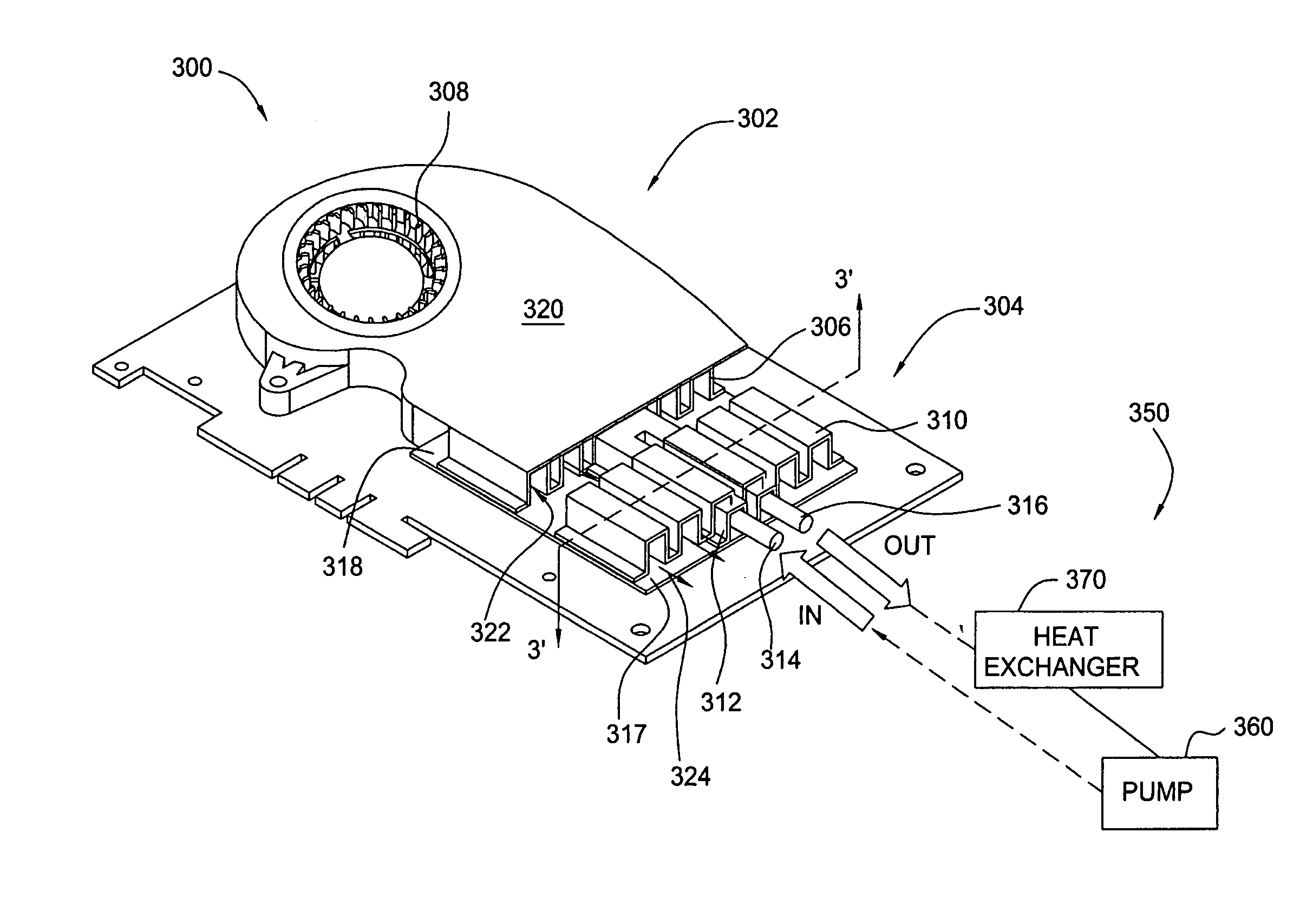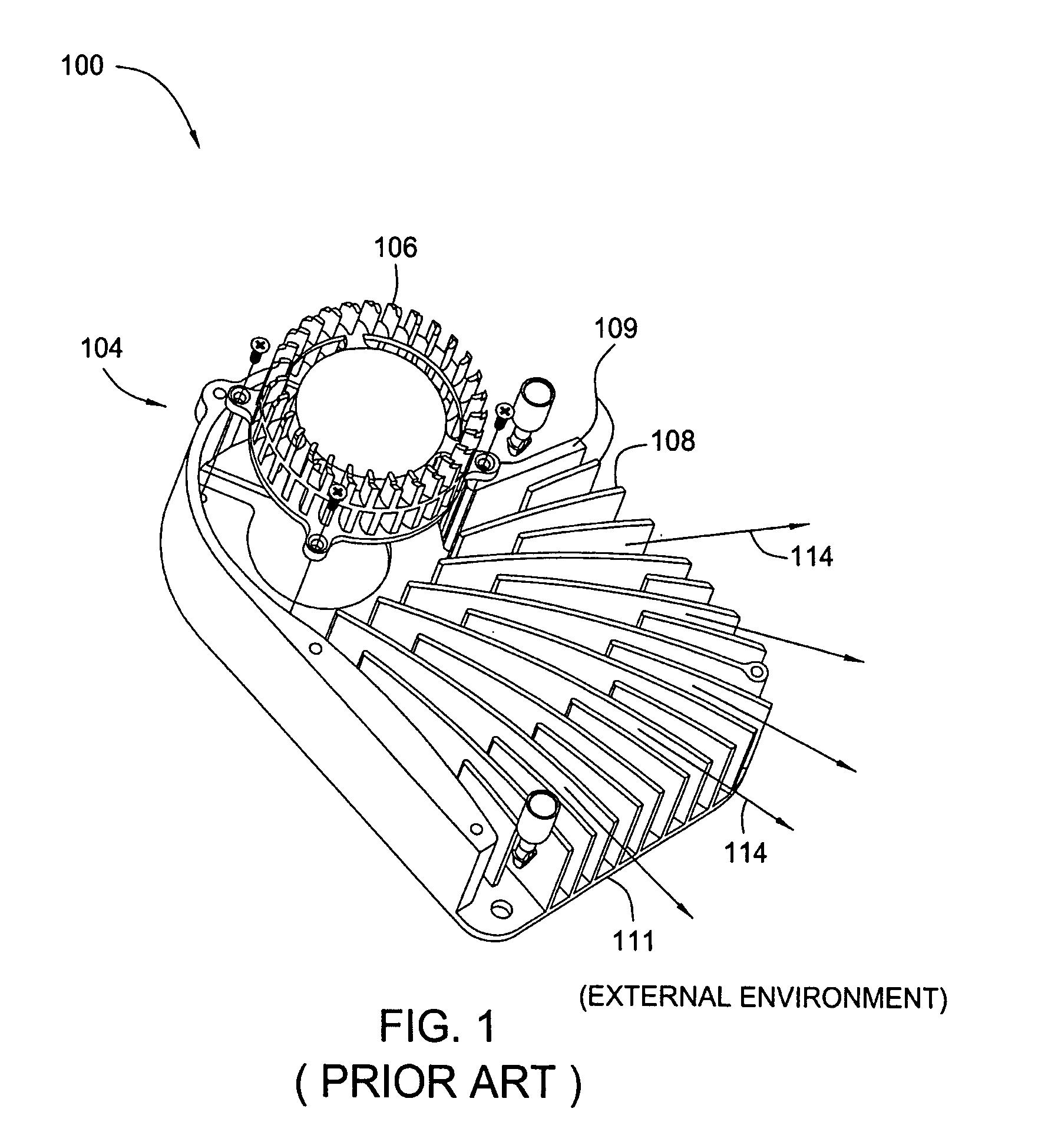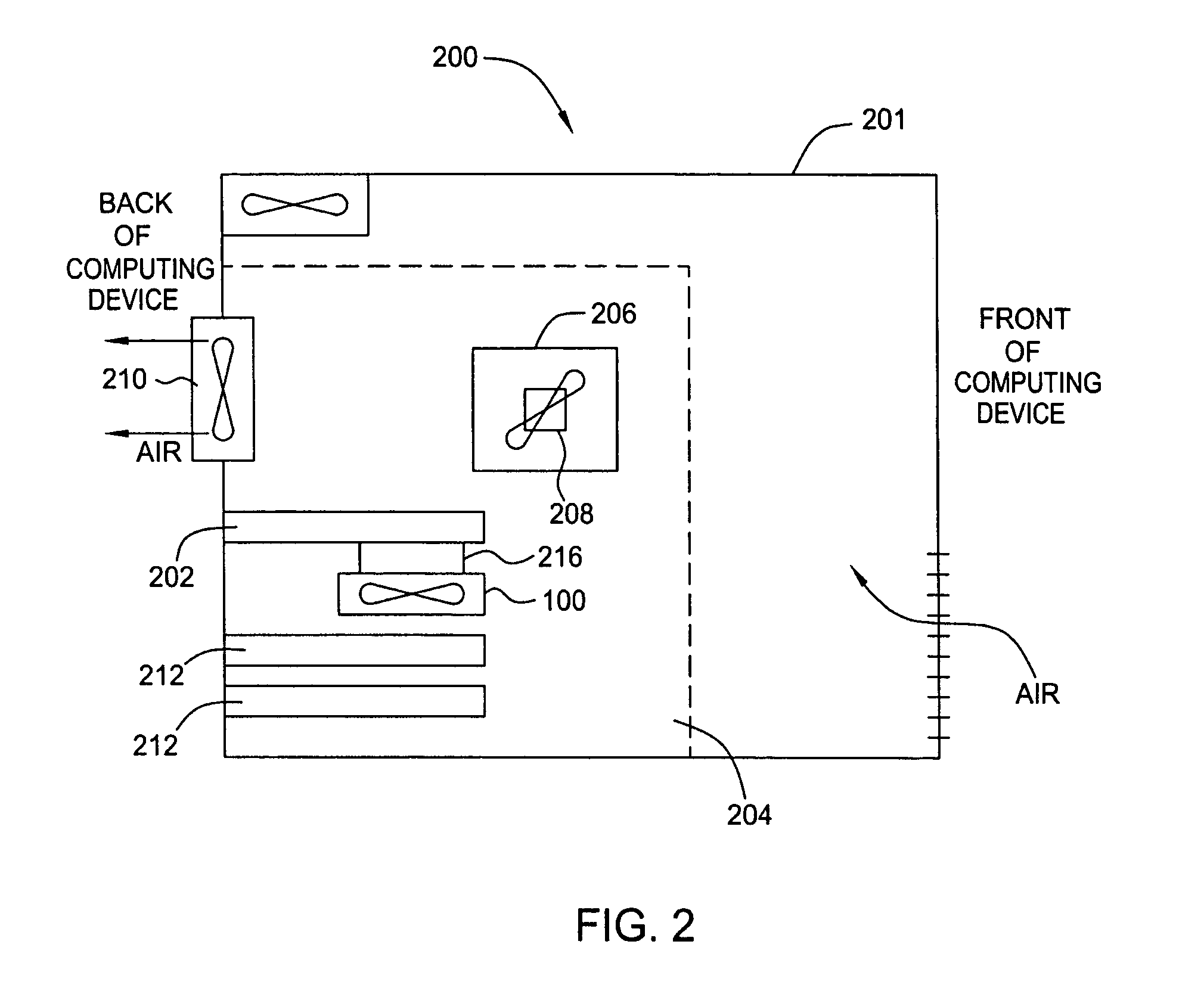Modular, scalable thermal solution
a thermal solution and modular technology, applied in the field of modular, scalable thermal solutions for computer hardware, can solve the problems of cooling system replacement, processor to generate more heat, and more powerful processors may generate more heat than the original processors
- Summary
- Abstract
- Description
- Claims
- Application Information
AI Technical Summary
Benefits of technology
Problems solved by technology
Method used
Image
Examples
second embodiment
[0044]FIG. 8 is schematic diagram illustrating a computing system 801 adapted for use with a modular, scalable cooling system 800, according to the present invention. Although implementations of cooling system 800 are described within the exemplary context of computing system 801, those skilled in the art will appreciate that cooling system 800 may be adapted to cool any type of heat-generating electronic device that requires heat dissipation.
[0045]In the embodiment illustrated, cooling system 800 is configured for coupling to a GPU 804 in lieu of a conventional cooling system, such as cooling system 100 of FIG. 1. Cooling system 800 may include, without limitation, a core cooling module 802, a supplemental cooling module 850, a first interface 806 and a second interface 870. As described above, core cooling module 802 may operate independently or in combination with one or more supplemental cooling modules to dissipate heat from GPU 804.
[0046]As shown, core cooling module 802 is th...
third embodiment
[0051]FIG. 9A is schematic diagram illustrating computing system 905 adapted for use with a modular, scalable cooling system 900A, according to the present invention. Specifically, cooling system 900A is adapted for simultaneously cooling two or more heat-generating electronic devices (e.g., graphics processors 901 and 903) implemented within computing system 905.
[0052]In one embodiment, cooling system 900A includes two or more core cooling modules 9021 and 9022 (hereinafter collectively referred to as “core cooling modules 902”), where one of core cooling modules 902 isothermally coupled to one of the heat-generating electronic devices. In addition, cooling system 900A includes, without limitation, an internal supplemental cooling module 950A, configured in a manner substantially similar to supplemental cooling module 350 of FIG. 3, and two or more first interfaces 9081 and 9082 (hereinafter collectively referred to as “first interfaces 908”), where one of first interfaces 908 is a...
PUM
 Login to View More
Login to View More Abstract
Description
Claims
Application Information
 Login to View More
Login to View More - R&D
- Intellectual Property
- Life Sciences
- Materials
- Tech Scout
- Unparalleled Data Quality
- Higher Quality Content
- 60% Fewer Hallucinations
Browse by: Latest US Patents, China's latest patents, Technical Efficacy Thesaurus, Application Domain, Technology Topic, Popular Technical Reports.
© 2025 PatSnap. All rights reserved.Legal|Privacy policy|Modern Slavery Act Transparency Statement|Sitemap|About US| Contact US: help@patsnap.com



